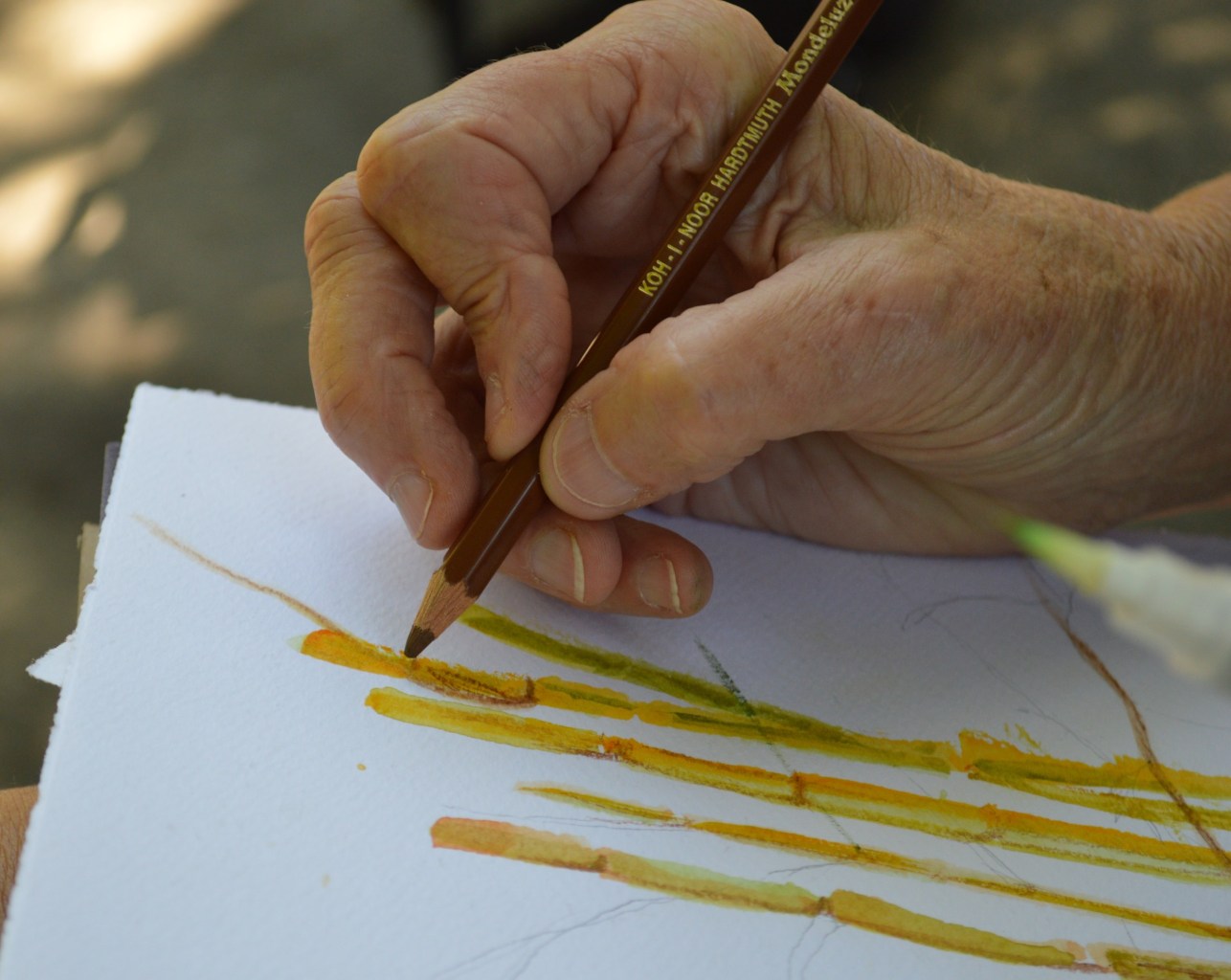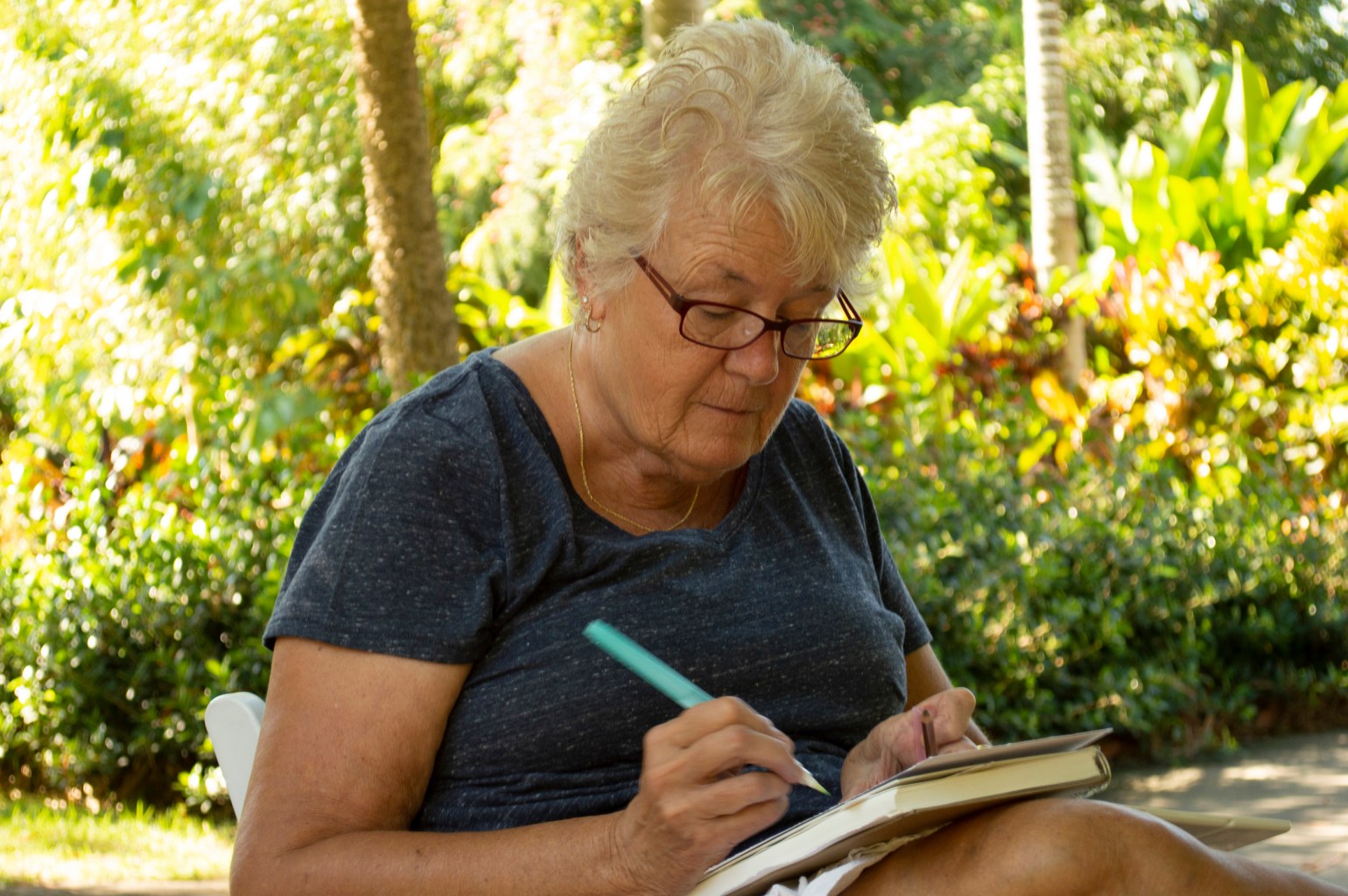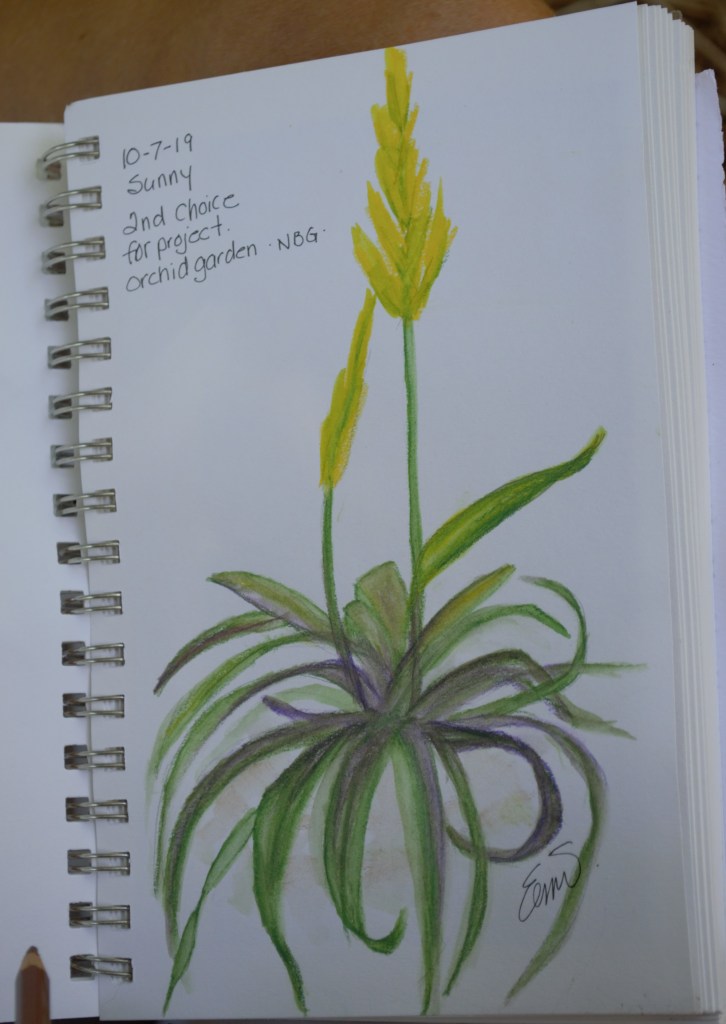
In 2018, twenty organizations enrolled in a special museum cohort of Aroha Philanthropies’ Seeding Vitality Arts program. With funding from Aroha, and training provided by Lifetime Arts, these museums are developing high-quality, intensive arts learning opportunities for older adults. Many of these museums are contributing guest posts to this blog sharing what they’ve learned. Today’s post is from Jennifer Reed, Editorial Director at Naples Botanical Garden in Naples, Florida.
Eileen Watkins positions a folding chair by a thicket of bamboo, readies her watercolor palette, and begins to re-create the reedy stalks. The color she picks to represent the mottled area is a bit too brown, she says, but she shrugs off the misstep.

“We’re all trying,” she says, acknowledging her fellow students, scattered in the Asian Garden section of Naples Botanical Garden in Naples, Florida. “It’s new. I like the challenge of learning something new. It’s trial and error.”
Watkins is one of ten older adults enrolled in “Nature Journaling: Botany Through Art,” an eight-week course our garden’s environmental educators developed with area art instructor Elizabeth Smith through an Aroha Philanthropies Seeding Vitality Arts grant.
On the surface, the course looks like a standard technique class: This morning, for example, Smith instructs how to draw leaves, calling attention to their shapes, edges, vein structures, and arrangements on the stems. But there is much more to the class than that.
“They are learning mostly about themselves,” says Smith. “They are learning how to problem-solve.” Surely, she would have been pleased by Watkins’ attitude, as she frequently reminds students: “Nothing you do is wrong. Every time you make a mistake you learn something, and we learn from each other. Drawing skills can be learned, but they require practice. The problem is we don’t give ourselves permission to do that.”
In a structured environment, however, students say they are pushing themselves to make time for a new skill or rediscover an old one.

“I’m realizing how much of myself I really turned away from,” says Cameron Ladner, a retired nurse. She used to consider herself quite into art until adulthood demands prompted her to put away her drawing pad. “It’s very freeing,” she says, sketching a water lily’s lovely purple bloom.
Our educators were eager to pursue the Vitality Arts grant. Naples, located along the Southwest Florida coast, is home to thousands of retirees, both year-round and seasonal. They comprise the majority of our volunteers; in fact, our first “Nature Journaling” session was piloted by volunteers. The current session is split between them and the general public.
“Looking at our demographics, there was obviously a need for a program like this,” says Mary Helen Reuter, Curator of Education & Visitor Experience.
We were well aware, of course, of the growing body of research showing how the arts benefit older adults.
A four-hundred-person clinical trial conducted in San Francisco, for example, found that seniors who participated in community choirs reported reduced levels of loneliness and increased interest in life, compared to those in control groups. The Creativity and Aging Study, by the National Endowment for the Arts and George Washington University, found that older adults who participated in weekly art programs reported better health, fewer doctor visits, less medication usage, improved mental health measures, and more involvement in activities at their one- and two-year follow-up assessments.
For us, a program tying art and nature made perfect sense. There is a long history of botanical art, from technical drawings to impressionism. Art is a means of exploring the natural world and our place within it.
“It’s a kind of a Zen experience,” says Sara Morgan. “Once you get past the idea of painting in public, you can get so wrapped up in the process that you forget everything.”
Fellow participant Sue Bergman offers similar thoughts. “You really focus when you are sitting in one area. Every time I come out here, I see something different.”
Our program is multi-modal. Smith encourages students to express themselves visually and with words. She tells them to record their observations, such as the day’s weather, and what they experienced during their outdoor painting session.

The class culminates in a public art showing, complete with artist statements.
“They have to really think and dig a little deeper into, ‘What meaning does this have for me? What’s the story you are trying to tell?’” Smith says.
The evolution—of both art and self-confidence—is impressive to watch. Reuter remembers the very first Nature Journaling class we offered last spring. The students, she says, packed into the back of the classroom and appeared almost reluctant to move around during the “ice breaker” activity. “It was almost like they were afraid to take up space,” she says. That tension eased as the class progressed.
Both Smith and Reuter pay careful attention to confidence-building, perhaps the program’s greatest outcome. When one student wryly comments about her inability to draw a straight line, Smith counters good-naturedly, “Well, nature doesn’t have a lot of straight lines!” Let the “right brain,” the creative side, take over, she urges. “We’re just gonna play,” she tells them. When another shows her work and dismisses her efforts as “not great,” the entire group erupts with compliments. Smith says, “See, we’re seeing a whole different thing than what you see.”
Just three weeks into the current session, the efforts appear to be working. Back at the bamboo patch, Watkins reflects on the biggest lesson she’s learned thus far.
“Almost anybody can do this is if they apply themselves,” she says.
The specifics
“Nature Journaling: Botany Through Art” meets once a week for a three-hour session. It includes a warm-up activity tied to the course’s objectives and designed to encourage interaction among students. Instructor Elizabeth Smith delivers a presentation on technique and then accompanies students to the garden, where they practice the day’s lesson. Mary Helen Reuter, Curator of Education & Visitor Experience, assigns homework that encourages additional reflection. Students work to complete one significant painting that will be framed and displayed in a public art exhibit. At the opening reception, students will also show and discuss their nature journals.
About the author:
Jennifer Reed is the Editorial Director for Naples Botanical Garden.







